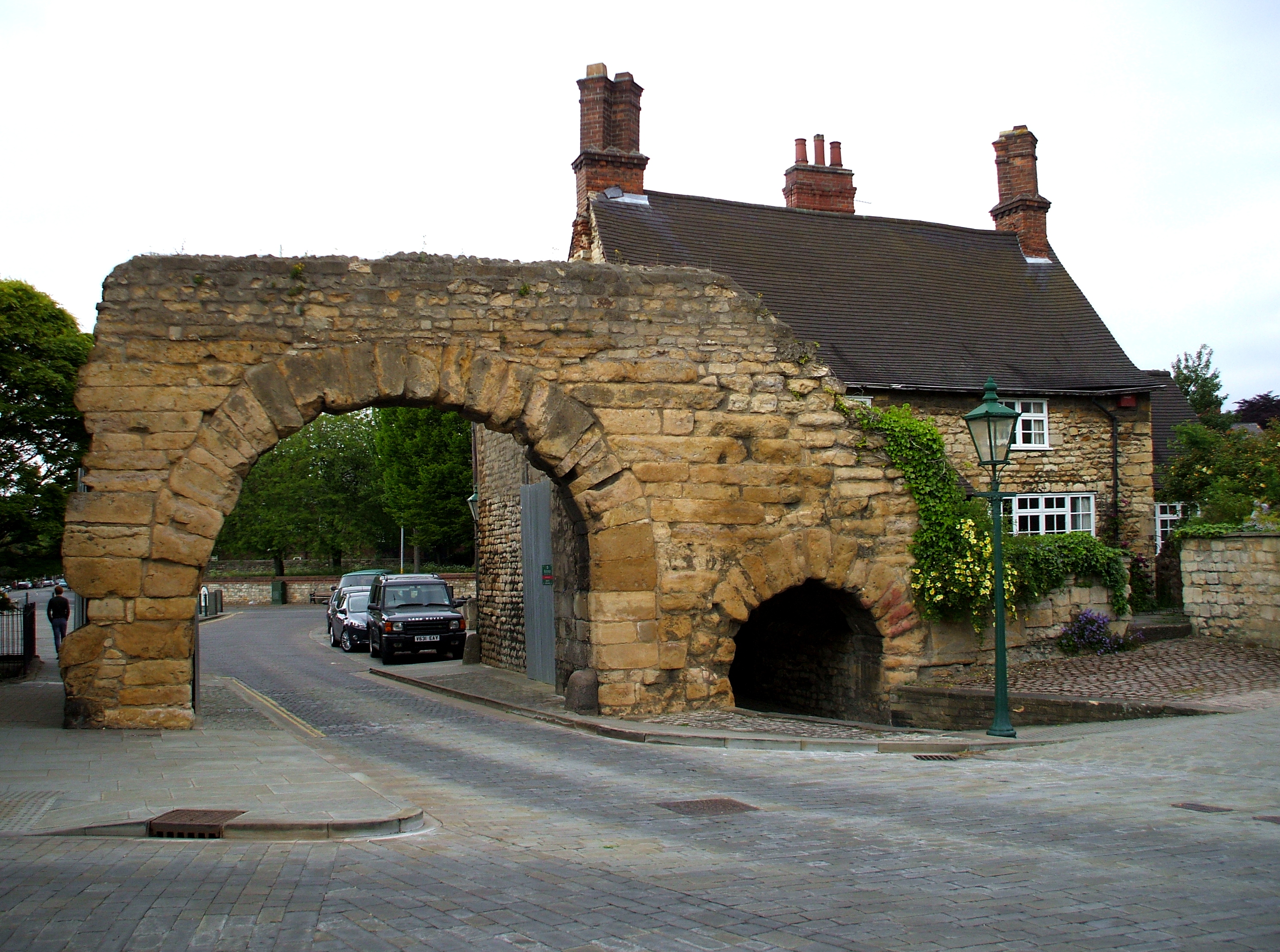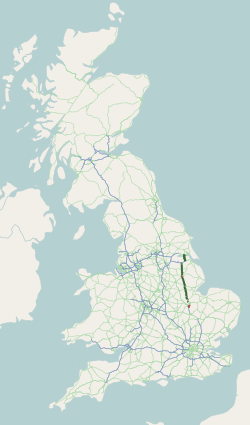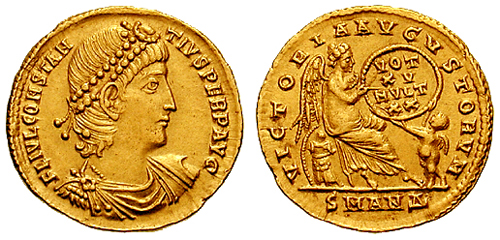|
Spridlington
Spridlington is a village and civil parish in the West Lindsey district of Lincolnshire, England. It is situated approximately north from the city and county town of Lincoln, and just off the A15 road. According to the 2001 Census the village had a population of 194, increasing to 213 at the 2011 census. The village is part of the Owmby Group of parishes. The parish church of St Hilary's dates from 1875. It replaced an earlier church dedicated to St Hilary and St Albinus – originally there were two churches in the village, but the site of St Albinus is unrecorded. By July 2007, St Hilary's had raised enough money to have its organ renovated. The restoration project was completed and the historic Thomas Nicholson organ was re-dedicated by the Bishop of Lincoln on St Hilary's Day, 13 January 2008. There is also a village hall A village hall is a public building in a rural or suburban community which functions as a community centre without a religious affiliation. ... [...More Info...] [...Related Items...] OR: [Wikipedia] [Google] [Baidu] |
United Kingdom Census 2011
A Census in the United Kingdom, census of the population of the United Kingdom is taken every ten years. The 2011 census was held in all countries of the UK on 27 March 2011. It was the first UK census which could be completed online via the Internet. The Office for National Statistics (ONS) is responsible for the census in England and Wales, the General Register Office for Scotland (GROS) is responsible for the census in Scotland, and the Northern Ireland Statistics and Research Agency (NISRA) is responsible for the census in Northern Ireland. The Office for National Statistics is the executive office of the UK Statistics Authority, a non-ministerial department formed in 2008 and which reports directly to Parliament. ONS is the UK Government's single largest statistical producer of independent statistics on the UK's economy and society, used to assist the planning and allocation of resources, policy-making and decision-making. ONS designs, manages and runs the census in England an ... [...More Info...] [...Related Items...] OR: [Wikipedia] [Google] [Baidu] |
West Lindsey
West Lindsey is a Non-metropolitan district, local government district in Lincolnshire, England. Its council is based in Gainsborough, Lincolnshire, Gainsborough, the district's largest town. The district also includes the towns of Caistor and Market Rasen, along with numerous villages and surrounding rural areas. The east of the district includes part of the Lincolnshire Wolds, a designated Area of Outstanding Natural Beauty. The neighbouring districts are North Lincolnshire, North East Lincolnshire, East Lindsey, North Kesteven, Lincoln, England, Lincoln, Newark and Sherwood and Bassetlaw District, Bassetlaw. History The district was created on 1 April 1974 under the Local Government Act 1972, covering five former districts which were all abolished at the same time: *Caistor Rural District *Gainsborough Rural District *Gainsborough Urban District *Market Rasen Urban District *Welton Rural District The new district was named West Lindsey, reflecting its position within Parts o ... [...More Info...] [...Related Items...] OR: [Wikipedia] [Google] [Baidu] |
Lincolnshire
Lincolnshire (), abbreviated ''Lincs'', is a Ceremonial counties of England, ceremonial county in the East Midlands and Yorkshire and the Humber regions of England. It is bordered by the East Riding of Yorkshire across the Humber estuary to the north, the North Sea to the east, Norfolk, Cambridgeshire, Northamptonshire and Rutland to the south, and Leicestershire, Nottinghamshire and South Yorkshire to the west. The county is predominantly rural, with an area of and a population of 1,095,010. After Lincoln (104,565), the largest towns are Grimsby (85,911) and Scunthorpe (81,286). For Local government in England, local government purposes Lincolnshire comprises a non-metropolitan county with seven districts, and the unitary authority areas of North Lincolnshire and North East Lincolnshire. The last two areas are part of the Yorkshire and the Humber region, and the rest of the county is in the East Midlands. The non-metropolitan county council and two unitary councils collabora ... [...More Info...] [...Related Items...] OR: [Wikipedia] [Google] [Baidu] |
Gainsborough (UK Parliament Constituency)
Gainsborough is a List of United Kingdom Parliament constituencies, constituency in Lincolnshire represented in the House of Commons of the United Kingdom, House of Commons of the Parliament of the United Kingdom, UK Parliament since 1983 by Edward Leigh, Sir Edward Leigh of the Conservative Party (UK), Conservative Party, who, since the 2024 general election, is the Father of the House (United Kingdom), Father of the House. History The constituency was created under the Redistribution of Seats Act 1885 that year, which lasted until it was reformed as Gainsborough and Horncastle (UK Parliament constituency), Gainsborough and Horncastle on a boundary change for the 1983 election. That seat lasted until 1997, as from the mid-1990s population changes led to removal of Horncastle from the seat and recreation of the old seat with largely similar boundaries. Boundaries The constituency is named for its largest town of Gainsborough, Lincolnshire, Gainsborough, on the western edge of t ... [...More Info...] [...Related Items...] OR: [Wikipedia] [Google] [Baidu] |
Civil Parish
In England, a civil parish is a type of administrative parish used for local government. It is a territorial designation which is the lowest tier of local government. Civil parishes can trace their origin to the ancient system of parishes, which for centuries were the principal unit of secular and religious administration in most of England and Wales. Civil and religious parishes were formally split into two types in the 19th century and are now entirely separate. Civil parishes in their modern form came into being through the Local Government Act 1894 ( 56 & 57 Vict. c. 73), which established elected parish councils to take on the secular functions of the parish vestry. A civil parish can range in size from a sparsely populated rural area with fewer than a hundred inhabitants, to a large town with a population in excess of 100,000. This scope is similar to that of municipalities in continental Europe, such as the communes of France. However, unlike their continental Euro ... [...More Info...] [...Related Items...] OR: [Wikipedia] [Google] [Baidu] |
County Town
In Great Britain and Ireland, a county town is usually the location of administrative or judicial functions within a county, and the place where public representatives are elected to parliament. Following the establishment of county councils in England in 1889, the headquarters of the new councils were usually established in the county town of each county; however, the concept of a county town pre-dates these councils. The concept of a county town is ill-defined and unofficial. Some counties in Great Britain have their administrative bodies housed elsewhere. For example, Lancaster, Lancashire, Lancaster is the county town of Lancashire, but the county council is in Preston, Lancashire, Preston. Owing to the creation of Unitary authorities of England, unitary authorities, some county towns in Great Britain are administratively separate from the county. For example, Nottingham is separated from the rest of Nottinghamshire, and Brighton and Hove is separate from East Sussex. On a ce ... [...More Info...] [...Related Items...] OR: [Wikipedia] [Google] [Baidu] |
Lincoln, England
Lincoln () is a cathedral city and non-metropolitan district, district in Lincolnshire, England, of which it is the county town. In the 2021 Census, the city's district had a population of 103,813. The 2021 census gave the Lincoln Urban Area, urban area of Lincoln, including Bracebridge Heath, North Hykeham, South Hykeham and Waddington, Lincolnshire, Waddington, a recorded population of 127,540. Roman Britain, Roman ''Lindum Colonia'' developed from an Iron Age settlement of Celtic Britons, Britons on the River Witham, near the Fosse Way road. Over time its name was shortened to Lincoln, after successive settlements, including by Anglo-Saxons and Danes (tribe), Danes. Landmarks include Lincoln Cathedral (English Gothic architecture; for over 200 years the world's tallest building) and the 11th-century Norman architecture, Norman Lincoln Castle. The city hosts the University of Lincoln, Bishop Grosseteste University, Lincoln City F.C. and Lincoln United F.C. Lincoln is the large ... [...More Info...] [...Related Items...] OR: [Wikipedia] [Google] [Baidu] |
A15 Road (Great Britain)
The A15 is a major road in England. It runs north from Peterborough via Market Deeping, Bourne, Sleaford and Lincoln along a variety of ancient, Roman, and Turnpike alignments before it is interrupted at its junction with the M180 near Scawby. The road restarts east, and then continues north past Barton-upon-Humber, crossing the Humber on the Humber Bridge before terminating at Hessle near Kingston upon Hull. Driving conditions According to the AA, the route is long and should take 2 hours. Norman Cross to Bourne takes 33 minutes, Bourne to Lincoln takes 46 minutes, and Lincoln to the Humber Bridge takes 54 minutes. A section of the A15 (between Scampton and the M180) provides the longest stretch of straight road in the UK. Route Peterborough The A15 is Peterborough's main connecting road from the south to the A1(M), joining near Stilton, at Norman Cross. It begins as ''London Road'' at junction 16 of the A1(M) with the B1043 (former A1) in Cambridgeshir ... [...More Info...] [...Related Items...] OR: [Wikipedia] [Google] [Baidu] |
Parish Church
A parish church (or parochial church) in Christianity is the Church (building), church which acts as the religious centre of a parish. In many parts of the world, especially in rural areas, the parish church may play a significant role in community activities, often allowing its premises to be used for non-religious community events. The Church architecture, church building reflects this status, and there is considerable variety in the size and style of parish churches. Many villages in Europe have churches that date back to the Middle Ages, but all periods of architecture are represented. Catholic Church Each diocese (administrative unit, headed by a bishop) is divided into parishes. Normally, a parish consists of all Catholics living within its geographically defined area. Within a diocese, there can also be overlapping parishes for Catholics belonging to a particular rite, language, nationality, or community. Each parish has its own central church called the parish church, ... [...More Info...] [...Related Items...] OR: [Wikipedia] [Google] [Baidu] |
Hilary Of Poitiers
Hilary of Poitiers (; ) was Bishop of Poitiers and a Doctor of the Church. He was sometimes referred to as the "Hammer of the Arians" () and the " Athanasius of the West". His name comes from the Latin word for happy or cheerful. In addition to his important work as bishop, Hilary was married and the father of Abra of Poitiers, a nun and saint who became known for her charity. Early life Hilary was born at Poitiers either at the end of the 3rd or beginning of the 4th century A.D. His parents were pagans of distinction. He received a good education, which included a high level of Greek. He studied, later on, the Old and New Testament writings, with the result that he abandoned his Neoplatonism for Christianity, and with his wife and his daughter, traditionally known as Saint Abra of Poitiers, was baptized and received into the Church. Arianism was becoming popular among Christians in this era and this theological position was supported by Constantine the Great. There were a ... [...More Info...] [...Related Items...] OR: [Wikipedia] [Google] [Baidu] |
Albinus Of Angers
Saint Albinus of Angers (; c. 470 – March 1, 550), also known as Saint Albin () in English, was a French abbot and bishop. Born to a noble Gallo-Roman family at Vannes, Brittany, St. Albinus was a monk and from 504 A.D. Abbot of Tintillac (which no longer stands; its location has not been satisfactorily identified). His reputation spread during the twenty-five years in which he served as abbot. In 529, St. Albinus was elected, against his wishes, Bishop of Angers. Episcopate He campaigned against incestuous weddings, such as those that occurred between members of the nobility. He participated in the Third Council of Orléans (538) after Childebert I, King Childebert granted permission for this council to take place. Albinus sought advice from St. Caesarius of Arles after seeing laxity in other bishops. Tradition states that he helped all in distress, using diocesan funds to free hostages from pirates. Another tradition states that he clashed with King Childebert, who had ... [...More Info...] [...Related Items...] OR: [Wikipedia] [Google] [Baidu] |
Village Hall
A village hall is a public building in a rural or suburban community which functions as a community centre without a religious affiliation. United Kingdom In the United Kingdom, a village hall is a building which is owned by a local government council or independent trustees, and is run for the benefit of the local community. It is estimated that there are over 10,000 such village halls. Most were built in the first decade after World War I (1919-1929) as part of a programme led by the newly-formed National Council of Social Service. Such a hall is typically used for a variety of public and private functions, such as: * Parish council meetings * Polling station for local and national elections *Sports and exercise groups - badminton is typical * Local drama productions *Dances * Jumble sales *Private parties such as birthdays or wedding receptions Village halls are generally run by committees, and if not already part of a local government body such as a parish council, ... [...More Info...] [...Related Items...] OR: [Wikipedia] [Google] [Baidu] |




